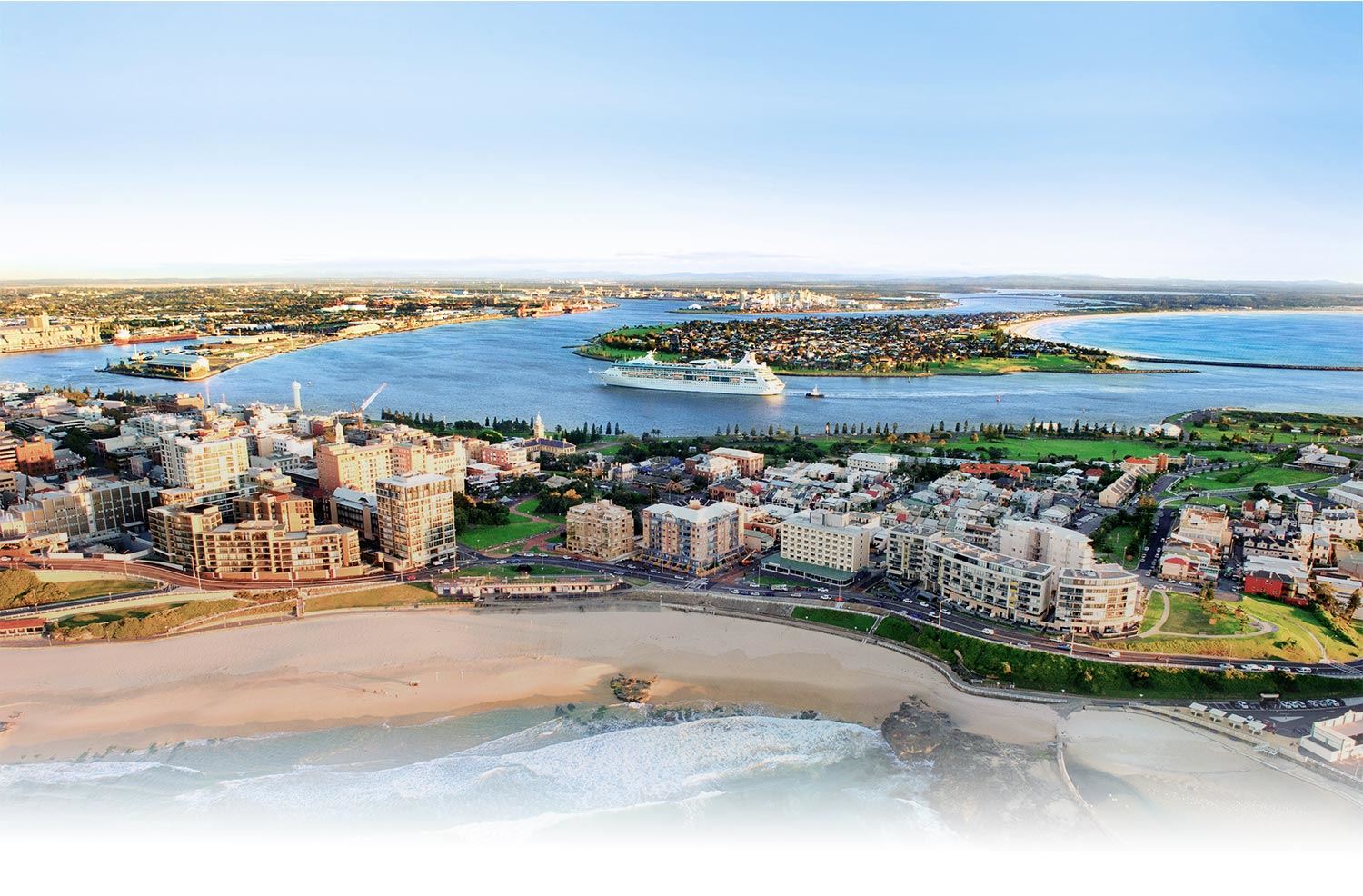
City seeks early feedback from community on north Stockton CMP erosion management options
07 Apr 2021
City of Newcastle is seeking feedback from the community on erosion management options for the northern area of Stockton Beach as part of work underway on the Stockton Coastal Management Program (CMP) 2021.
The land to the north of Meredith Street is owned and managed by Defence Housing Australia, Hunter Water, Crown Land and the Department of Communities and Justice, and City of Newcastle is working closely with these stakeholders during development of the 2021 CMP.
A long list of coastal management options for the Stockton CMP 2021 has been assessed with four schemes identified to best complement the mass sand nourishment agreed on in the Stockton CMP 2020 while also providing a buffer from erosion and considering the environment, social amenity and recreational use of the beach.
The four schemes that have progressed for further investigation for the northern end of Stockton Beach from Meredith Street to the Port Stephens Local Government Area boundary include maintenance nourishment, an artificial reef, an artificial headland and sand back passing.
City of Newcastle Lord Mayor Nuatali Nelmes said work is underway on the Stockton CMP 2021, with an aim of identifying additional coastal management options to extend the life of mass sand nourishment.
“We’re investigating the feasibility of these schemes to ensure each is possible and would provide consideration to the entire Stockton Bight,” Cr Nelmes said.
“During this early phase we are gathering feedback from the community on the schemes that have been developed to help prolong mass sand nourishment.
“The Stockton Community Liaison Group has provided feedback on the positives and drawbacks of each scheme, allowing the designs to progress to this point.
“We would now like to hear from the wider community about what people like or don’t like about the options we’re considering, and why.”
City of Newcastle Director Infrastructure Ken Liddell said that following community consultation, the proposed schemes would then be put through rigorous technical tests.
“For schemes that are considered feasible, we will then carry out a viability assessment, which will take the cost of each scheme into account and allow us to carry out a cost-benefit analysis,” Mr Liddell said.
Deputy Lord Mayor Declan Clausen said the community will have another chance to provide feedback on viable projects before implementation.
“There will be further opportunities for the community to have their say on the schemes being considered for Stockton CMP 2021 later in the year, and we look forward to continuing to work with the local community towards another positive outcome for the beach and the community,” Cr Clausen said.
The Stockton CMP 2021 will update the Stockton CMP 2020 to include the northern end of Stockton Beach beyond Meredith Street, with the City reiterating that this land is owned and managed by Defence Housing Australia, Hunter Water, Crown Land and the Department of Communities and Justice.
City of Newcastle is working closely with these stakeholders during development of the 2021 CMP.
“These stakeholders must agree to the coastal management actions in the Stockton CMP 2021 to allow it to be sent for certification from the State Government. Without agreement, the CMP cannot progress,” Cr Nelmes said.
The community is encouraged to learn more about the management options and provide feedback at newcastle.nsw.gov.au/Stockton or by accessing a paper survey at Stockton Library.
Stockton Beach (north) Coastal Management Program options
Maintenance Nourishment
This involves replacing the sand that currently moves north from Stockton Beach along the Stockton Bight each year – about 112,000m3 or 45 Olympic swimming pools. The aim of this scheme is to actively ‘keep the sand moving’ by mimicking/reinstating the natural sand flow, something that has been limited at Stockton.
The benefit of this approach is that the northward movement of sand would provide a buffer for the Stockton Bight coastline. For this to go ahead, we still need to identify a source for the sand and identify the long-term environmental impacts of retrieving and depositing this additional sand on a regular basis. Work on this has started.
Artificial Headland
This involves building an artificial headland that would extend into the ocean by around 150 to 200 metres. The aim of this scheme is to ‘keep sand in the system’ as the headland will slow the northern movement of sand along Stockton Bight. There will also be recreational benefits.
As part of this scheme, sand will build up on the southern side of the headland. Once it has built up, sand will bypass the headland and then feed the beach to the north. Once construction is complete the shoreline to the north of the structure will realign landward.
For this to go ahead, we still need to confirm exactly how the headland will work. Specific scientific modelling will determine sand volumes held by the structure and sand volumes bypassing the structure. Work on this has started.
Artificial Reef
This involves building a submerged artificial reef. The artificial reef would slow the northward movement of sand along Stockton Bight by reducing wave energy reaching the beach, providing a surfing benefit. With the aim to ‘keep sand in the system’ the sand will build up on the southern side of the reef. The reef would not stop sand movement to the north as the artificial headland option initially does. Once construction is complete, the shoreline to the north of the structure will realign.
For this to go ahead, we need to find out if we have the ability/need to build more than one reef and learn exactly how it would work. Specific modelling will determine sand volumes held by the structure and sand volumes by passing the structure. Work on this has started.
Sand Back Passing System
This involves re-circulating sand using machinery that will collect sand, feeding it via a pipe network to the south, to outlets placed along Stockton Beach. This scheme aims to ‘keep sand in the system’ by re-circulating sand, following mass nourishment.
It would be powered by a pump station, allowing wet sand to flow from the outlets onto Stockton Beach. The pumping rate will allow for the water to run into the ocean leaving the sand to fall out, building the beach up during a campaign. During operation, small sections of the beach would be closed to the public, however most of the beach would remain open.
For this to go ahead, we still need to determine the exact location for the infrastructure and run scientific modelling around the volumes of sand that will be used. We are also yet to determine how frequently the system would need to operate. Work on this has started.













